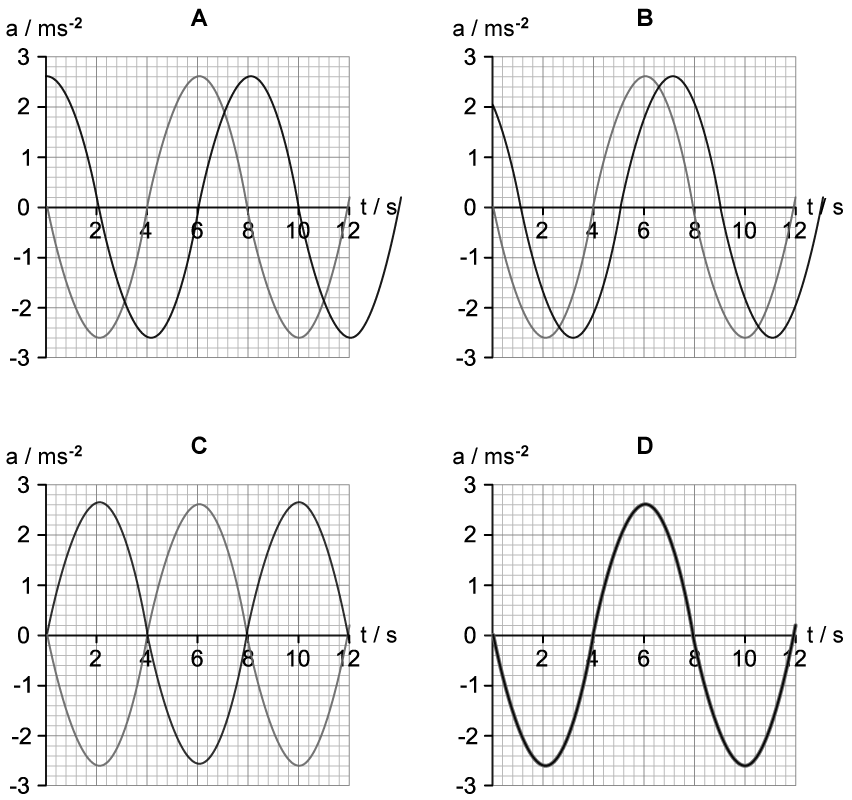A mass-spring system is oscillating with simple harmonic motion.
What is the total energy of the object proportional to?
The square of both the mass and the amplitude
Mass and displacement of the object
Mass and the square of the amplitude
Choose your answer A B C D
View Answer
Next Question
Which line identifies quantities which always have opposite directions during simple harmonic motion?
Acceleration and displacement
Acceleration and velocity
Velocity and restoring force
Acceleration and restoring force
Choose your answer A B C D
View Answer
Previous Question Next Question
The graph shows the variation with time t of the acceleration a of an object X undergoing simple harmonic motion (SHM).
A second object Y oscillates with the same frequency as X but with a phase difference of
Which graph shows how the acceleration of object Y varies with t ?
Choose your answer A B C D
View Answer
Previous Question Next Question
A particle, P , oscillates on the line XZ about its equilibrium point Y , in simple harmonic motion.
At the point shown, which statement could be correct about the motion of the particle?
It has maximum kinetic energy and minimum potential energy
The total energy is equal to the kinetic energy at X
The restoring force is towards Z and the particle is accelerating
The restoring force is towards X and the particle is accelerating
Choose your answer A B C D
View Answer
Previous Question Next Question
A pendulum is undergoing simple harmonic motion with a time period T and angular frequency ω .
A student makes a change to the set up so that the pendulum has a new time period 3T .
What is the new angular frequency?
Choose your answer A B C D
View Answer
Previous Question Next Question
A pendulum is made to swing by a student pulling the bob to the left and releasing it. The student is careful to displace the bob by only a small amount.
After two full oscillations, the motion of the pendulum is plotted on a graph.
At which point is the velocity of the bob towards the right?
Choose your answer A B C D
View Answer
Previous Question Next Question
A mass is attached to a vertical spring and allowed to reach equilibrium. It is then displaced by a distance d and released. The total energy and time period are ET and T respectively.
In a second investigation the same mass-spring system travels twice as fast.
Which line correctly identifies the total energy and time period of the second oscillations?
ET
T
A.
2E
B.
4E
C.
2E
2T
D.
4E
T
Choose your answer A B C D
View Answer
Previous Question Next Question
Which of the following graphs shows the variation with displacement x of the speed v of a particle performing simple harmonic motion?
Choose your answer A B C D
View Answer
Previous Question Next Question
Which graph correctly represents the relationship between acceleration, a , and displacement, x , in simple harmonic motion?
Choose your answer A B C D
View Answer
Previous Question Next Question
The graph shows the motion of an oscillating body.
What is the frequency of the oscillation?
Choose your answer A B C D
View Answer
Previous Question






